Last updated on January 21, 2024

Liu Bei, Lord of Shu | Illustration by Qiao Dafu
A lot of the basic mechanics that we learn in Magic as new players are foundational to the game itself. Trample, vigilance, haste, and especially flying are some of the first wrinkles that players see added to creatures.
Keywords like this are considered “evergreen,” meaning they show up in every set on at least a couple creatures. Or at least almost every set. Only one expansion has ever decided to replace flying: Portal: Three Kingdoms.
Today I’m going to look at the mechanic that took its place, if only for a brief moment: horsemanship.
The History of Horsemanship in MTG
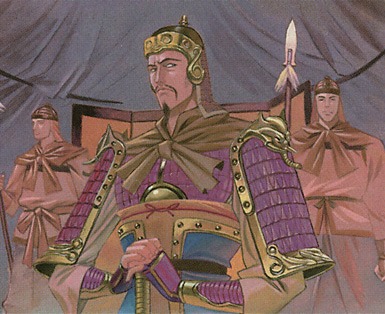
Yuan Shao, the Indecisive | Illustration by Inoue Junichi
Horsemanship is a one-off mechanic introduced in Portal: Three Kingdoms in 1999 (and no, they're not restricted to horse creatures). This set was unusual in a variety of different ways. It was only released in East Asian markets and Australia and, like Arabian Nights before it, was based on a historical period in human history: the Three Kingdoms era.
In an effort to keep a level of historical accuracy, horsemanship replaced one of the more common keywords in Magic: flying. One of the hallmark cards of the set, Zodiac Dragon, is one of only nine dragons that doesn’t have and can’t naturally get flying.
The set designers still wanted access to a keyword that provided evasion and so horsemanship was born.
How Does Horsemanship Work?
Given that Portal: Three Kingdoms was a starter set not intended to be played with other Magic sets at the time, it was designed to be played in a microcosm. Horsemanship is basically flying when playing strictly with Portal: Three Kingdoms cards.
Creatures with horsemanship can’t be blocked except by other creatures with horsemanship. But just like with flying, creatures with horsemanship can still block creatures without it.
Horsemanship vs. Flying
The most notable difference between horsemanship and flying is the existence of reach. Reach, a mechanic introduced on Giant Spider and its many friends, was only keyworded after it existed on a couple dozen cards.
Flying as a mechanic went from “this card can’t be blocked except by other creatures with flying” to “this card can’t be blocked except by other creatures with flying or reach.” Portal: Three Kingdoms¸ being a one-off starter set, didn’t have any creatures specifically designed to counter horsemanship.
Is Horsemanship Better Than Flying?
Rather than being better than flying, horsemanship is basically just a different version of flying that isn’t forwards or backwards compatible.
On the one hand, creatures with horsemanship can’t block creatures with flying (makes sense). On the other hand, creatures with flying can’t block creatures with horsemanship because (as we all know) dragons, angels, and demons will just stare blankly as you ride past them.
Can a Creature with Flying or Reach Block Horsemanship?
No, creatures with horsemanship can only be blocked by other creatures with horsemanship. It’s a testament to the power of the mechanic that some of the most legendary creatures ever printed can do nothing to stall the onslaught of some armored warriors as long as they’ve mastered the art of riding.
Is Horsemanship Legal in Commander?
Yes, all 27 horsemanship cards are legal in Commander. You might even run into one featured as a commander on some occasions.
Is Horsemanship the Same Thing as Flanking?
Flanking is a mechanic introduced in Mirage that has a very similar flavor to horsemanship since it most frequently appears on cards featuring warriors on horseback, but the two mechanics are very mechanically distinct. While horsemanship is a keyword ability that provides some evasion, flanking is a triggered ability that doles out temporary -1/-1 counters to creatures that dare to block it.
Gallery and List of Horsemanship Cards


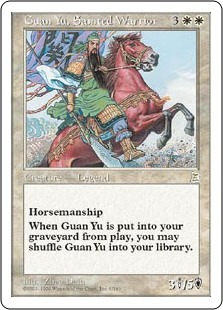
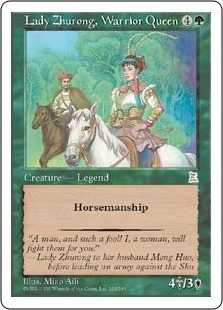
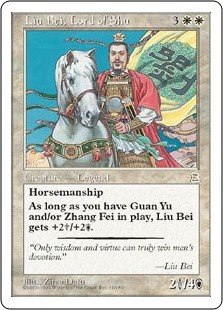
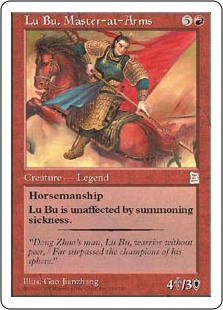
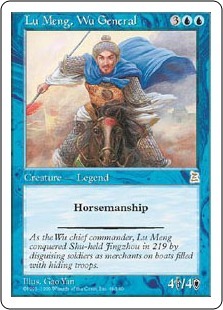
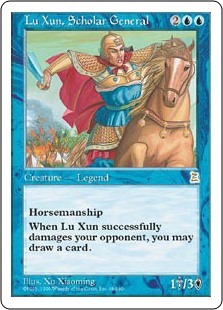
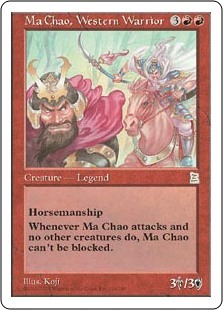

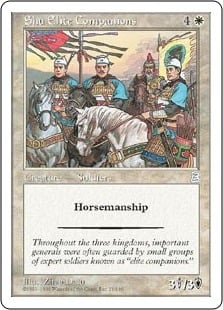

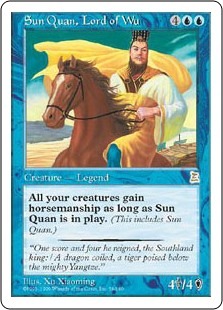
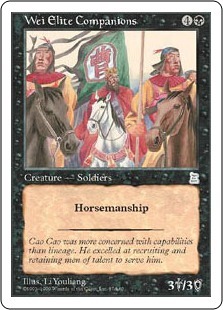

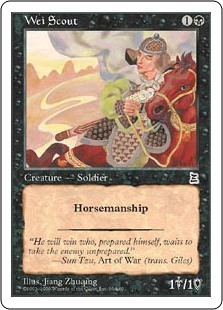



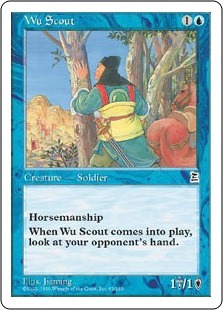
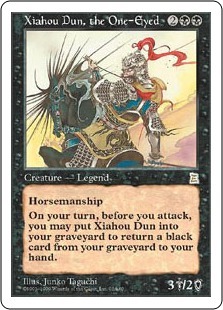
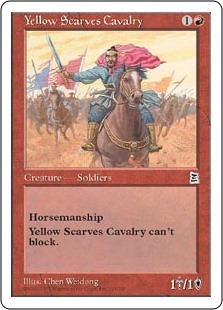
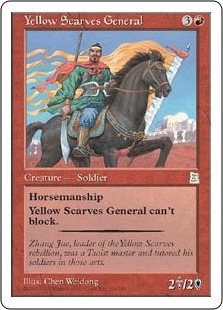
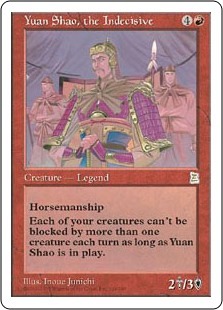
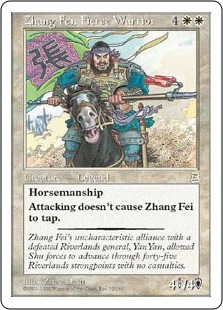
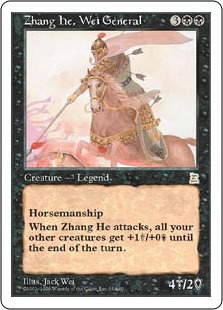
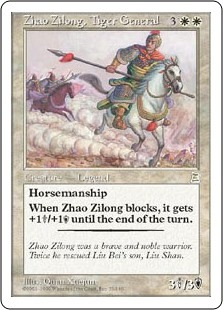
- Barbarian General
- Cao Ren, Wei Commander
- Guan Yu, Sainted Warrior
- Lady Zhurong, Warrior Queen
- Liu Bei, Lord of Shu
- Lu Bu, Master-at-Arms
- Lu Meng, Wu General
- Lu Xun, Scholar General
- Ma Chao, Western Warrior
- Shu Cavalry
- Shu Elite Companions
- Sun Ce, Young Conquerer
- Sun Quan, Lord of Wu
- Wei Elite Companions
- Wei Night Raiders
- Wei Scout
- Wei Strike Force
- Wu Elite Cavalry
- Wu Light Cavalry
- Wu Scout
- Xiahou Dun, the One-Eyed
- Yellow Scarves Cavalry
- Yellow Scarves General
- Yuan Shao, the Indecisive
- Zhang Fei, Fierce Warrior
- Zhang He, Wei General
- Zhao Zilong, Tiger General
Best Horsemanship Cards
Most of the cards featuring horsemanship are mirrors of other cards with flying, but some emerged with more unique designs. One of the joys of deckbuilding is that it can come from a wide variety of inspirations.
If you find yourself inspired to build a horsemanship-focused deck out of love for the mechanic, love for the set and its history, or purely out of your sense of humor, here are the top 5 cards that you should consider:
#5. Zhang He, Wei General
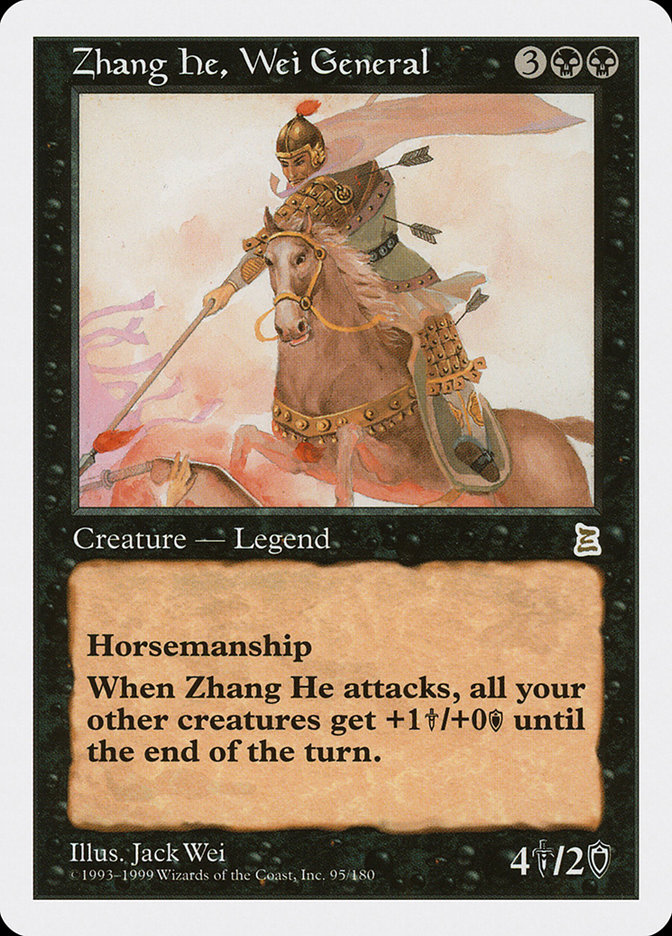
Zhang He, Wei General isn’t particularly impressive by modern designs. But its attack trigger is one of the precursors of the modern battle cry mechanic.
#4. Ma Chao, Western Warrior
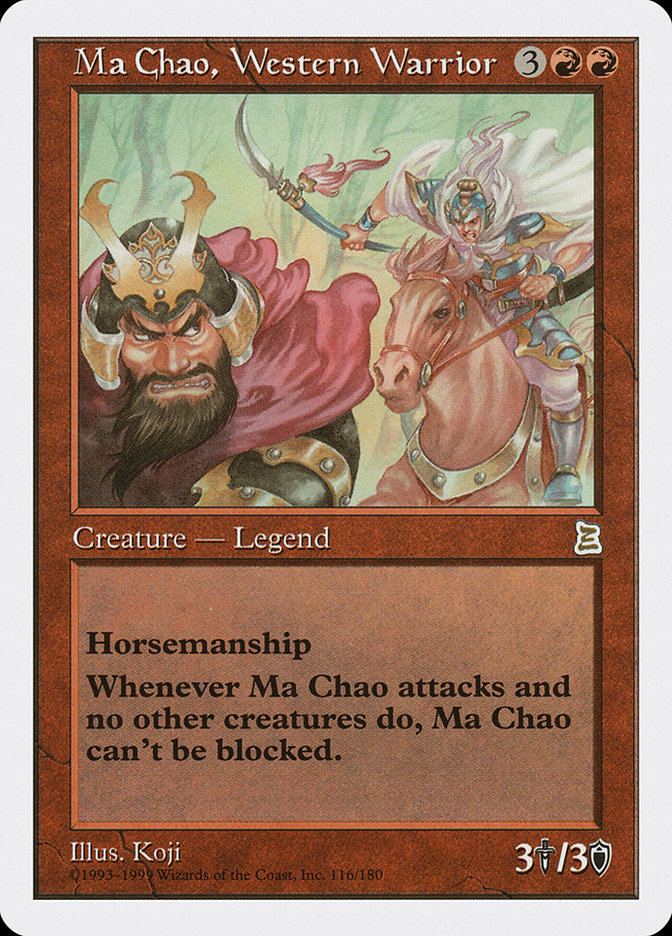
Ma Chao, Western Warrior can ride past even other creatures with horsemanship when attacking alone. Anything with that level of power deserves every ounce of respect.
All tongue-in-cheek commentary aside, being unblockable was a fairly uncommon ability back in the day which made Ma Chao a fairly complex design for its time.
#3. Xiahou Dun, the One-Eyed
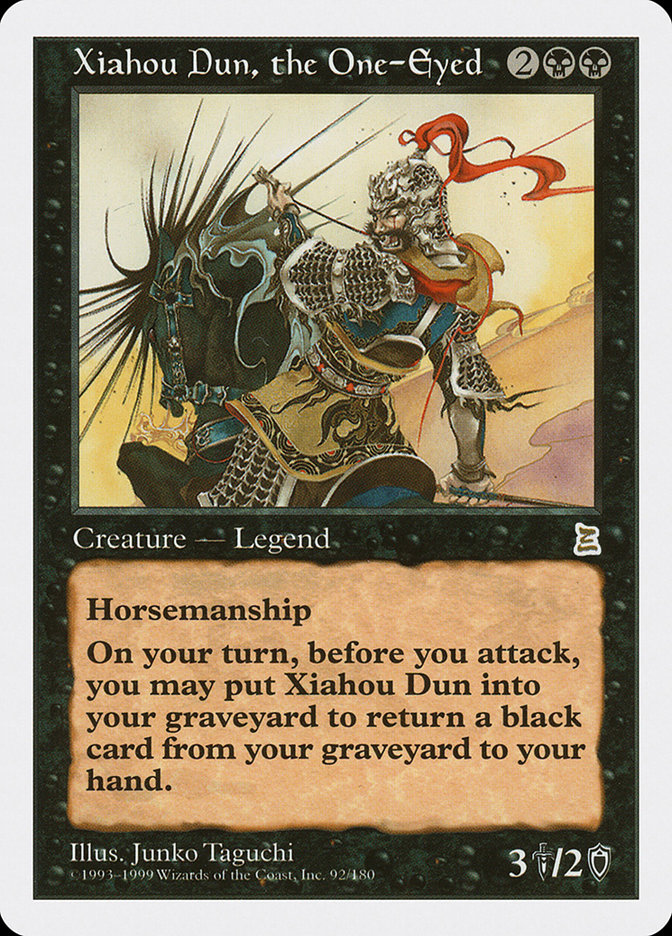
Now we get into the unique mechanics. Gameplay featuring the Portal sets was designed to be played at sorcery speed, hence the timing restrictions on Xiahou Dun, the One-Eyed’s ability.
#2. Liu Bei, Lord of Shu
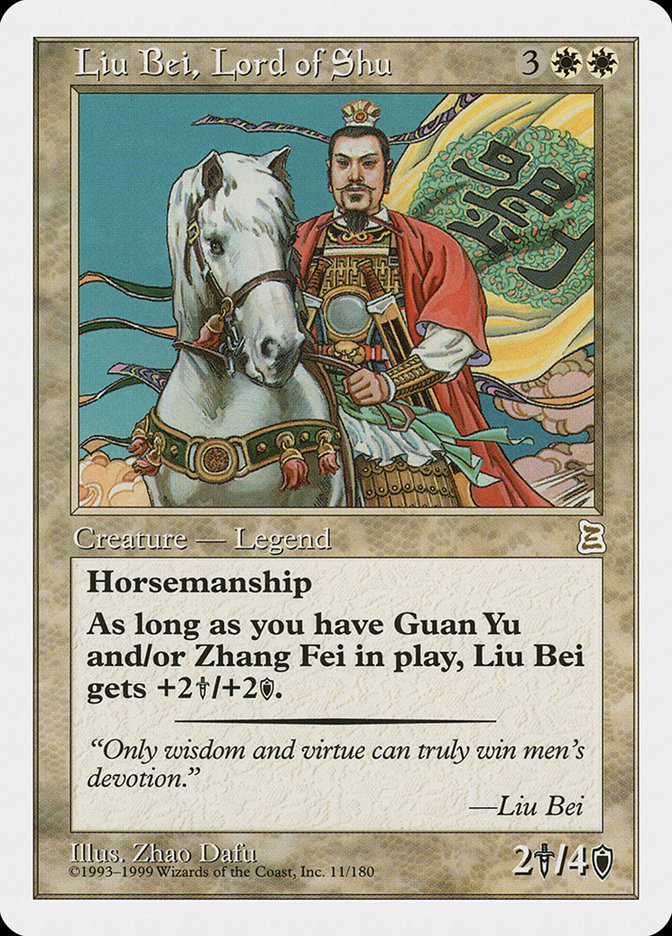
There’s a certain charm to cards that reference other cards by name like Liu Bei, Lord of Shu does. The incentive to assemble an army of mounted warriors to power up their lord really exemplifies the flavor of surrounding yourself with your trusted allies.
#1. Sun Quan, Lord of Wu
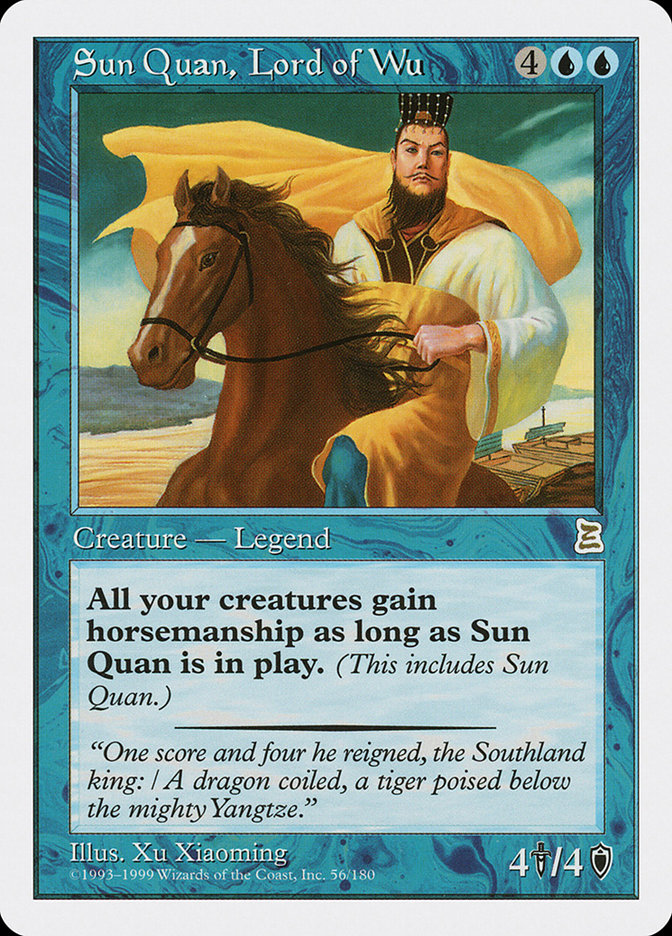
Speaking of assembling a horde of riders, Sun Quan, Lord of Wu is the unquestionable star of any horsemanship strategy. What would be more fitting of any lord of equine strategy than the ability to confer it to all its retinue?
Best Horsemanship Payoffs
On top of the cards that have horsemanship there are a couple notable spells that mention the mechanic.
Riding the Dilu Horse
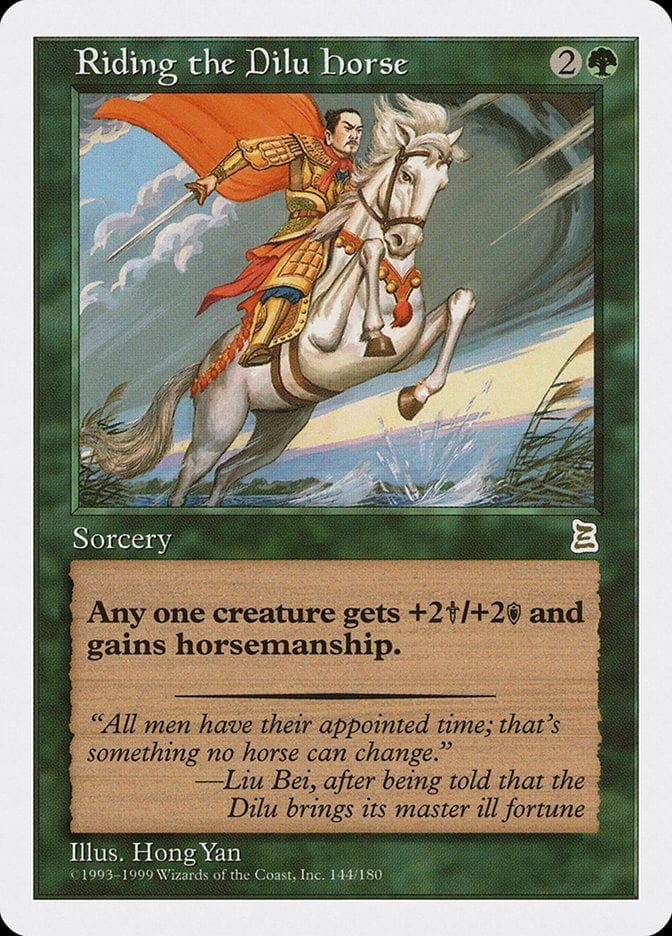
Riding the Dilu Horse is occasionally mentioned here and there, mostly for its unusual line of text. The stat and ability boost that this spell gives is permanent, something that was never done before or even after its printing. This doesn’t seem too wild with the introduction of ability counters in Ikoria: Lair of Behemoths, but the permanent power boost without using counters still hasn’t been seen since.
Rolling Earthquake
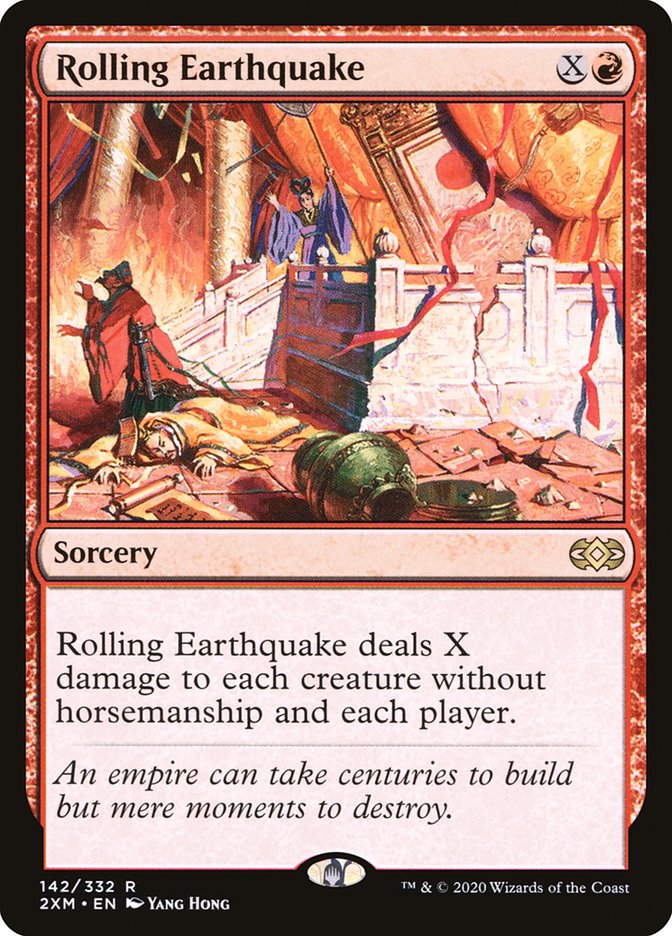
Rolling Earthquake has been reprinted a couple times, mostly thanks to its utility in various Commander settings and its status as a Cube staple. Given how rare creatures with horsemanship are, this card mostly reads as “Rolling Earthquake deals X damage to each player and each creature.” The unintended ability to damage and destroy flying creatures sets this apart from many other similar cards.
Wrap Up
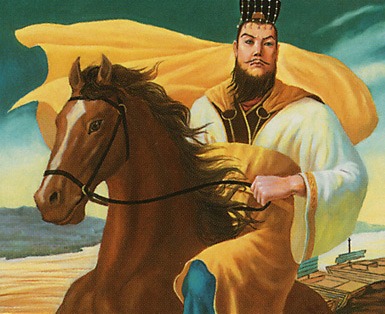
Sun Quan, Lord of Wu | Illustration by Xu Xiaoming
Horsemanship lives with banding, bands with others, landhome, cumulative upkeep, and company in the halls of retired mechanics. Newer players will be regaled with tales of these weird archaic mechanics mostly as a joke, but they serve their place in Magic’s history.
You’ll come across these rarities and recognize relics from a bygone era every once in a while, whether as a meme commander or front and center in someone’s trade binder as a statement. It’s always a fun conversational starter and a warm memory of Portal: Three Kingdom’s storied past.
Have I answered all your questions concerning horsemanship? Do you find any of my opinions or assessments of these equestrian champions dubious or contentious? Let me know in the comments down below.
That’s all I have for you today. Stay safe, stay healthy, and wash your hands!
Follow Draftsim for awesome articles and set updates:
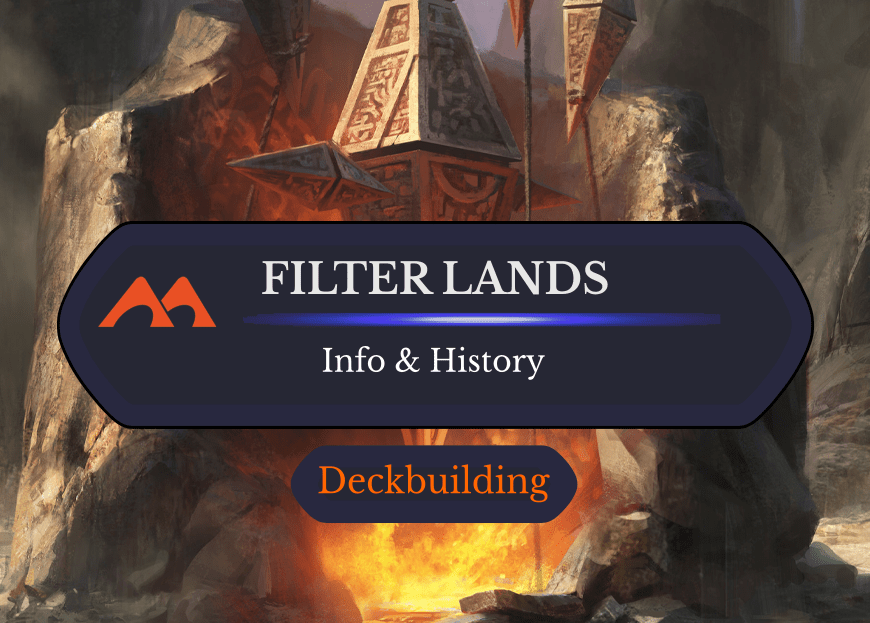
1 Comment
Great summary and explanations!
Add Comment